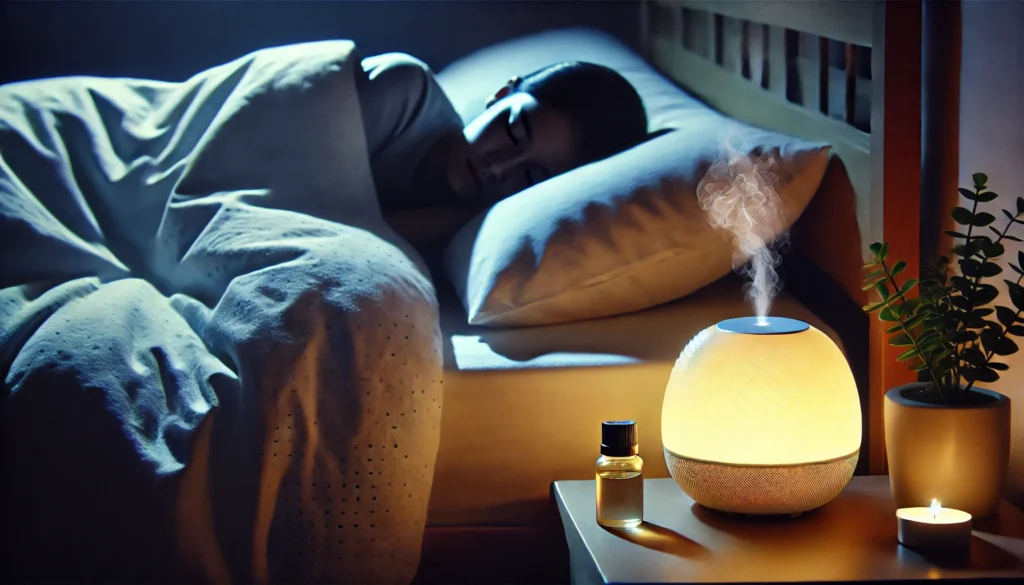Understanding the Weight of Anxiety and Depression
Anxiety and depression are more than transient moments of sadness or worry. They are complex mental health conditions that affect every dimension of a person’s life—from sleep and appetite to motivation, energy levels, and even physical well-being. For those struggling with depression and anxiety, daily routines can become burdensome, relationships may feel strained, and the future can appear dimly lit. This article delves into the heart of these conditions, offering expert-backed tools and insights to promote lasting relief. Drawing from psychology, neuroscience, and integrative medicine, we explore evidence-based strategies for managing symptoms, fostering resilience, and reclaiming a sense of purpose and vitality.
You may also like: Proven Relaxation Techniques for Stress and Anxiety: Evidence-Based Strategies to Calm Your Mind and Body
While anxiety often manifests as persistent worry, restlessness, or physical tension, depression frequently brings about prolonged sadness, lack of interest, and emotional numbness. However, these two conditions frequently co-occur, creating a challenging web of symptoms that are best addressed through a multi-pronged approach. Understanding how to improve anxiety and depression requires more than quick fixes—it calls for a holistic, sustainable strategy rooted in self-awareness and practical coping mechanisms. As we explore these pathways, we aim to empower readers with science-backed tools for emotional regulation, lifestyle alignment, and mental resilience.
Why Holistic Coping Matters in Mental Health Recovery
When navigating anxiety and depression relief, a singular approach is rarely sufficient. Pharmaceutical interventions, while helpful for many, may not fully address the underlying patterns of thought, behavior, and lifestyle that contribute to emotional suffering. In contrast, a holistic framework embraces the interconnectedness of the mind and body, emphasizing nutrition, sleep hygiene, exercise, social support, and cognitive reframing as key pillars of healing. Holistic coping methods provide individuals with the skills to not only manage symptoms but also build internal resources for future challenges.
By integrating coping skills for anxiety with broader mental wellness practices, individuals can begin to interrupt maladaptive cycles and form new neural pathways associated with calmness and emotional balance. Neuroplasticity—the brain’s ability to rewire itself in response to experiences—is central to this process. Through consistent engagement with therapeutic tools, such as mindfulness or behavioral activation, individuals begin to shift how they perceive stressors and respond to emotional discomfort. In this way, healing becomes not merely a state to reach, but a continuous process to engage with.
Cognitive Behavioral Therapy and the Power of Thought Reframing
Cognitive Behavioral Therapy (CBT) has long been regarded as a gold standard for treating anxiety and depression. Rooted in the idea that our thoughts, feelings, and behaviors are intimately connected, CBT encourages individuals to examine their internal dialogue and replace distorted or unhelpful thoughts with more adaptive, realistic interpretations. This process, known as cognitive restructuring, is an essential anxiety coping skill for adults who feel overwhelmed by intrusive worries or self-critical thinking patterns.
By identifying cognitive distortions—such as catastrophizing, black-and-white thinking, or personalizing—individuals can begin to challenge these mental habits and explore alternative explanations. For instance, someone who thinks, “I failed once, so I’ll always fail” can learn to reframe this into, “Failure is part of growth, and I can learn from this experience.” These shifts are not mere platitudes; they alter the brain’s stress response and empower individuals to approach problems with a more grounded, solution-focused mindset. Over time, this kind of mental flexibility becomes a core resilience skill for coping with anxiety and depression.
The Role of Physical Activity in Mood Regulation
Exercise is a profoundly effective yet often underutilized tool in the treatment of depression, anxiety, and stress. Regular physical activity has been shown to increase levels of endorphins—our natural mood enhancers—as well as stimulate the production of brain-derived neurotrophic factor (BDNF), a protein that supports the growth and resilience of neurons. In this way, exercise is not just about physical fitness; it is a fundamental pillar of mental health.
Research consistently demonstrates that aerobic activities like walking, running, swimming, or cycling can significantly reduce symptoms of both anxiety and depression. Even moderate activity, such as daily stretching or light yoga, contributes to improved energy levels, better sleep, and a more positive outlook. Importantly, the act of moving one’s body also instills a sense of agency—a reminder that we have the power to influence our internal state. For many people wondering how to get rid of anxiety and depression, establishing a regular movement practice is a transformative starting point.

Mindfulness and Meditation: Anchoring the Present Moment
Mindfulness is the practice of paying attention to the present moment with openness and curiosity. It offers a gentle yet profound way to disengage from the mental loops that fuel sadness and anxiety. In moments of distress, our thoughts often spiral into regrets about the past or fears about the future. Mindfulness brings us back to what is happening right now—in the breath, in the body, in the sensory experience of living. This redirection reduces the grip of negative rumination and supports emotional regulation.
Scientific studies have found that regular mindfulness practice can lead to changes in brain regions associated with emotional regulation, such as the amygdala and prefrontal cortex. Techniques like mindful breathing, body scans, and loving-kindness meditation have all been shown to lower cortisol levels and promote a sense of calm. For individuals exploring ways to cope with anxiety and depression, mindfulness offers both immediate relief and long-term transformation by cultivating non-reactivity and self-compassion. It invites a different relationship with discomfort—one marked not by resistance, but by acceptance and resilience.
Nutrition and Gut-Brain Health in Mental Wellness
The connection between diet and mental health is increasingly recognized as essential rather than peripheral. Our gastrointestinal system is often referred to as the “second brain” because of the dense network of neurons in the gut and its communication with the central nervous system via the vagus nerve. The gut microbiome plays a critical role in synthesizing neurotransmitters such as serotonin and dopamine, which regulate mood and emotion.
A diet rich in whole, unprocessed foods—especially those high in omega-3 fatty acids, fiber, antioxidants, and fermented products—has been associated with lower rates of depression and anxiety. On the other hand, diets high in refined sugars and trans fats can exacerbate symptoms of emotional distress. For those struggling with depression and anxiety, making conscious nutritional choices may not feel like a quick fix, but over time, these small daily decisions can contribute significantly to emotional stability and cognitive clarity. Recognizing what is good for depression and anxiety includes re-evaluating how food fuels not just the body, but the brain.
Social Connection as a Protective Factor
Human beings are wired for connection. Social isolation is a known risk factor for both anxiety and depression, while supportive relationships are among the most effective buffers against mental health deterioration. Whether through friendships, family ties, support groups, or therapeutic alliances, the presence of empathetic, nonjudgmental support can be profoundly healing. In moments of despair or self-doubt, simply being seen and heard by another person can shift the emotional landscape dramatically.
Social interaction also helps to regulate the body’s stress response by stimulating the release of oxytocin and dampening the physiological arousal associated with anxiety. For many adults dealing with sadness and anxiety, rebuilding or nurturing social networks can feel challenging—especially if trust has been eroded or shame plays a role. Yet, even small gestures like reaching out to an old friend, volunteering in the community, or joining a shared-interest group can foster a sense of belonging and emotional safety. These connections serve as a powerful form of anxiety and depression relief, reminding individuals that they are not alone.

Frequently Asked Questions (FAQ) on Coping with Anxiety and Depression
1. How can I make lifestyle changes that truly help when coping with anxiety and depression?
Many people overlook the subtle yet powerful effects of consistent daily habits. One often under-discussed method of improving mental health is micro-habit stacking—layering small, achievable goals like hydration, five-minute movement breaks, or morning light exposure into a cohesive routine. These foundational habits not only enhance energy levels but also build self-efficacy, which is critical when struggling with depression and anxiety. Over time, such practices compound, reducing emotional reactivity and fostering a greater sense of stability. This proactive approach is particularly useful for individuals searching for how to improve anxiety and depression in a way that feels manageable and sustainable.
2. What are some emerging or lesser-known coping tools for anxiety?
In addition to traditional strategies, researchers are now exploring somatic therapies and biofeedback as effective coping tools for anxiety. These methods focus on the body’s physical responses, helping individuals tune into subtle cues and interrupt the escalation of anxious thoughts. Somatic tracking, for instance, encourages patients to follow the physical sensations of anxiety non-judgmentally, while heart rate variability training uses breathing exercises to influence the autonomic nervous system. For adults seeking more embodied anxiety coping skills, these approaches offer innovative ways to build awareness and self-regulation. They can be especially beneficial when integrated with mindfulness and movement-based practices.
3. Are there gender differences in how people experience and cope with anxiety and depression?
Yes, gender can influence both symptom expression and coping mechanisms. For example, men often externalize their distress through irritability or risk-taking, whereas women may be more likely to internalize symptoms through rumination or self-blame. These patterns influence which coping skills for anxiety feel accessible or socially acceptable. Tailoring approaches based on gender identity and personal history can help people develop strategies that align with their emotional wiring. This nuanced perspective is important for creating effective, personalized ways to cope with anxiety and depression.
4. How can I cope when my anxiety and depression make it hard to even get started?
One of the most debilitating aspects of depression anxiety and stress is paralysis—the overwhelming sense that even small tasks feel insurmountable. In these moments, behavioral activation can be key. This strategy involves gently engaging in valued activities regardless of motivation, based on the understanding that action precedes emotion. Breaking tasks into ultra-manageable steps, such as putting on shoes or opening a window, can create momentum. For those asking how to get rid of anxiety and depression when even basics feel too hard, the answer lies in permission to start small and celebrate progress without pressure.
5. How does digital technology affect anxiety and depression relief?
Digital tools can both support and sabotage mental health. On the one hand, mobile apps and telehealth platforms offer guided meditations, therapy sessions, and journaling prompts that support anxiety and depression relief. On the other hand, constant exposure to social media can exacerbate comparison, loneliness, and digital fatigue. Practicing digital hygiene—curating feeds, limiting screen time, and engaging with intentional content—can make a substantial difference. For those exploring what can help with anxiety and depression, mindful tech use is an often-overlooked but vital part of the equation.
6. Can spirituality or philosophical practices support emotional resilience?
Spirituality—broadly defined—can be an anchor during emotional turmoil. Whether through religious practice, meditation, or philosophical reflection, engaging with a sense of purpose beyond the self can provide grounding and hope. Existential therapies, for instance, help individuals confront meaninglessness and suffering with courage and clarity. For people struggling with depression and anxiety, spiritual practices often offer a framework for acceptance, forgiveness, and connection that complements traditional therapeutic tools. These pathways provide not just symptom relief but a sense of depth and coherence in life’s narrative.
7. What if I’ve tried everything and still feel stuck?
Feeling stuck despite trying various strategies is not uncommon, and it doesn’t indicate failure. This plateau can signal a need for deeper therapeutic exploration, such as addressing trauma, attachment wounds, or unconscious beliefs. Modalities like EMDR (Eye Movement Desensitization and Reprocessing) or Internal Family Systems (IFS) therapy can uncover and resolve underlying emotional blocks. It’s also worth reassessing lifestyle mismatches, such as burnout, toxic environments, or unresolved grief. Knowing how to improve anxiety and depression sometimes requires stepping into less familiar, more specialized forms of healing.
8. How do I build emotional endurance while coping with chronic symptoms?
Living with long-term mental health challenges demands a shift in mindset from “fixing” to “nurturing.” Emotional endurance grows when we develop routines that restore rather than exhaust. This may involve practicing radical acceptance, cultivating creative expression, and aligning work-life balance with core values. For individuals seeking ways to deal with anxiety and depression that doesn’t rely solely on symptom elimination, building a life worth living—despite pain—becomes the ultimate goal. It’s a transition from acute crisis management to long-term emotional stewardship.
9. How do I explain my mental health struggles to people who don’t understand?
Articulating emotional pain to those unfamiliar with it can feel frustrating or invalidating. Using metaphors or analogies—like comparing anxiety to a car alarm that won’t turn off or depression to being underwater—can make experiences more relatable. Role-playing these conversations with a therapist or journaling responses in advance can also help clarify what to share. While some relationships may never offer full understanding, selectively disclosing to safe and empathetic listeners can provide relief. This approach fosters connection without overexposing oneself during vulnerable times, especially when navigating sadness and anxiety alongside social stigma.
10. What does recovery really look like for anxiety and depression?
Recovery is rarely a linear ascent toward happiness. It is often cyclical, with periods of regression and growth, requiring patience, adaptability, and ongoing support. For many adults, cultivating anxiety coping skills is not about eradicating emotion, but learning how to navigate life with presence and compassion. Progress might look like shortened recovery time after setbacks, greater insight into personal triggers, or the ability to ask for help. Recovery means building a toolkit of coping tools for anxiety and depression that fit your evolving needs, rooted in both self-reliance and community care.

Sleep Hygiene and Restorative Rest
Sleep is not a luxury—it is a biological necessity for emotional balance and cognitive function. Yet, anxiety and depression often disrupt sleep patterns, creating a vicious cycle of fatigue, irritability, and intensified symptoms. Insomnia, early waking, or restless sleep can worsen emotional regulation and impair decision-making, further fueling mental distress. Reestablishing healthy sleep hygiene is therefore a cornerstone of any comprehensive strategy for coping with anxiety and depression.
This includes creating a consistent sleep schedule, reducing screen time before bed, limiting caffeine or alcohol intake in the evening, and cultivating a calming bedtime routine. Practices like reading, light stretching, or using a weighted blanket can signal to the body that it is time to unwind. Sleep is also intimately linked with memory consolidation and emotional processing; without it, the brain cannot effectively process and integrate experiences. For those wondering what can help with anxiety and depression, restoring the quality and quantity of sleep is an essential, non-negotiable component of recovery.
mental health strategies, emotional regulation techniques, managing chronic stress, overcoming low mood, mental resilience building, self-care for mental wellness, therapeutic lifestyle changes, neuroplasticity and mental health, trauma-informed therapy, psychological self-help tools, nervous system regulation, building emotional intelligence, holistic mental health support, calming nervous system naturally, therapy alternatives, mental clarity practices, managing emotional overload, stress hormone reduction, lifestyle support for mental health, behavioral health interventions
Further Reading:
Depression and anxiety: Exercise eases symptoms
Ten ways to improve the treatment of depression and anxiety in adults
Disclaimer
The information contained in this article is provided for general informational purposes only and is not intended to serve as medical, legal, or professional advice. While Health11News strives to present accurate, up-to-date, and reliable content, no warranty or guarantee, expressed or implied, is made regarding the completeness, accuracy, or adequacy of the information provided. Readers are strongly advised to seek the guidance of a qualified healthcare provider or other relevant professionals before acting on any information contained in this article. Health11News, its authors, editors, and contributors expressly disclaim any liability for any damages, losses, or consequences arising directly or indirectly from the use, interpretation, or reliance on any information presented herein. The views and opinions expressed in this article are those of the author(s) and do not necessarily reflect the official policies or positions of Health11News.


